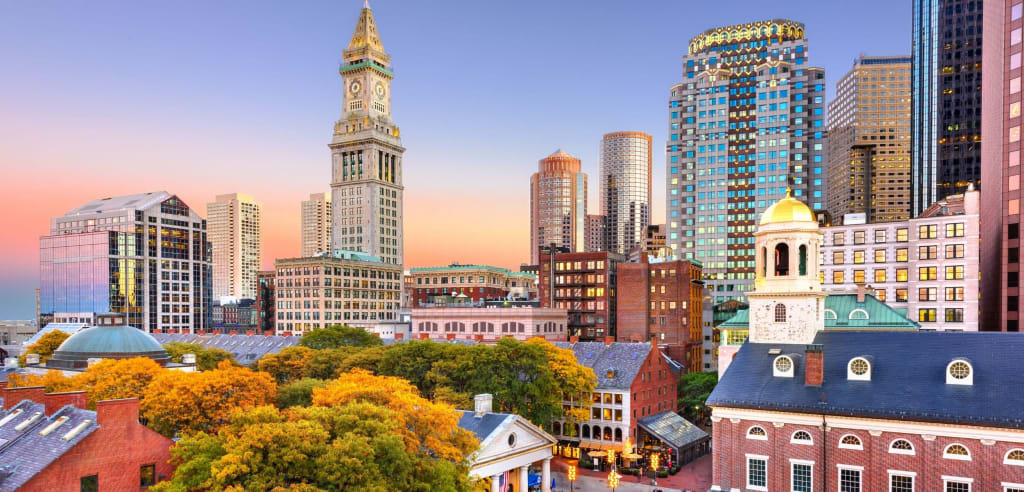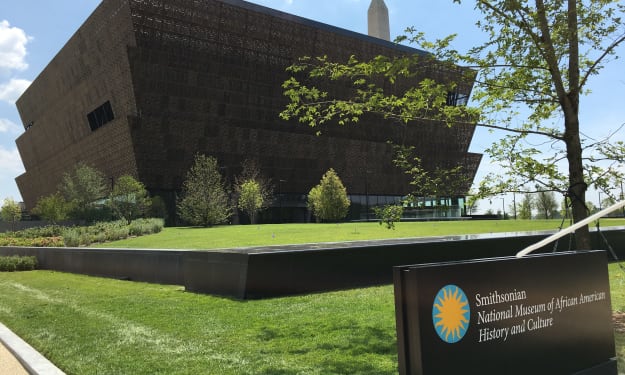Boston Black Heritage Trail
One of the best historic trails Boston has to offer for city group tours.

The city of Boston in Massachusetts is rich in history. It is the cradle of the American Revolution, the birthplace of the American people’s struggle for independence and self-determination. Because of this rich history, the city is famous today for its heritage trails that take Boston group tours back in the time that the United States is developing a nation. These trails pass through locations significant to the history of the United States.
The most popular of these historic trails in Boston is the Freedom Trail. The Freedom Trail is a 2.5 mile-long path that passes through downtown Boston along 16 locations of historical significance. These include the Boston Common, the Old South Meeting House, the Old State House, the Paul Revere House, and the Bunker Hill Monument in Charlestown.
However, Boston is not only rich in revolutionary history but also thriving with African-American heritage owing to Massachusetts being the first state to declare slavery illegal and becoming an ideal destination for escaping slaves, especially during the Civil War. Thus, a sizeable Black community developed in Boston settling on the north face of Beacon Hill, and in the North End. And in these communities, the Black Heritage Trail passes through. Aside from the Freedom Trail, the Black Heritage Trail is a worthwhile activity for a Boston city group tour, especially for African Americans who want to retrace their history.
The Boston Black Heritage Trail starts at the Abiel Smith School on 46 Joy Street where the Museum of African American History is housed. In this museum, exhibits tell the story of Boston's black history and the American Civil Rights Movement.
Adjacent to the Abiel Smith School is the African Meeting House, built in 1806 and is now the oldest black church structure still standing in the United States. The African Meeting House originally served as an African Baptist church but it also served a significant role during the abolitionist movement and the American Civil War. The African Meeting House became known as the Black Faneuil Hall during the abolitionist movement. On January 6, 1832, William Lloyd Garrison founded the New England Anti-Slavery Society here. During the Civil War, Frederick Douglass and others recruited soldiers here for the 54th and 55th Massachusetts Regiments.
Amongst those who reacted were the volunteers of the Massachusetts 54th Regiment, the first of the United States Colored Troops, who contributed a lot to the Union effort. Their contributions were commemorated by an excellent monolith, illustrating their farewell march down Beacon Street, which was erected at the edge of Boston Common, across Beacon Street from the Massachusetts State House. Poet Robert Lowell won a Pulitzer Prize in the 20th century for his poem, "For the Union Dead," about this monument and soldiers.
The Black Heritage Trail winds around Beacon Hill. It passes significant schools, organizations, and houses, ranging from the little, cream clapboard houses of Smith Court to the enforcing Lewis and Harriet Hayden House, 66 Phillips St. The Hayden House was a well-known stop on the Underground Railroad and the Haydens protected numerous fugitive slaves from bounty hunters.
Another historic site on the trail is the Phillips School. When it was established in 1824, it was a school for white children. After Massachusetts passed a law in 1855 that required school desegregation, Phillips was one of the first integrated schools in Boston.
The Charles Street Meeting House is an early-nineteenth-century historic church in Beacon Hill at 70 Charles Street, Boston, Massachusetts. The church has been used over its history by several Christian denominations, including Baptists, the First African Methodist Episcopal Church, and Unitarian Universalist.
Although some black Bostonians lived in the North End and in the West End north of Cambridge Street, more than half the city’s 2,000 blacks lived on Beacon Hill just below the residences of wealthy whites. The historic buildings along today’s Black Heritage Trail were the homes, businesses, schools, and churches of a black community that organized from the nation’s earliest years to sustain those who faced discrimination and slavery.
Many of the sites included in the tour are houses of African American abolitionists and Civil Rights activists. These buildings became witness to the lives, works, and struggles as they fight for freedom, acceptance, and equality.
One of the historic homes included in the Black Heritage Trail is the John J. Smith House. Smith was an African American abolitionist, Underground Railroad contributor, and politician, including three terms as a member of the Massachusetts House of Representatives. He also played an important part in rescuing then-slave Shadrach Minkins from federal custody, along with Lewis Hayden and others.
Another house that is part of the trail is the William C. Nell House located at 3 Smith Court in Beacon Hill. William C. Nell was the author of several histories, including Colored Patriots of the American Revolution, and he worked at various times for the Liberator, the Massachusetts Anti-Slavery Society, and the Frederick Douglass’ Paper. He was also very active in the Boston Vigilance Committee and he sheltered or aided numerous self-emancipated slaves at his home in 3 Smith Court. He is considered the nation's first published black historian.
The John Coburn House is another well-visited house included in the Black Heritage Trail. John Coburn an African-American abolitionist, civil rights activist, tailor, and clothier who aided people on the Underground Railroad.
And lastly, do not miss the oldest extant home constructed by an African-American on Beacon Hill. It was the house of George Middleton, a noted veteran of the Revolutionary War. He led an all-black system called the "Bucks of America." His service was acknowledged by Governor John Hancock. The wood-frame, two-family home dates from 1797.
These are just the sites along the Black Heritage Trail. This city in Massachusetts has a lot of history to tell and a lot more adventure to discover. Boston has more to offer for you and your group tour.






Comments
There are no comments for this story
Be the first to respond and start the conversation.